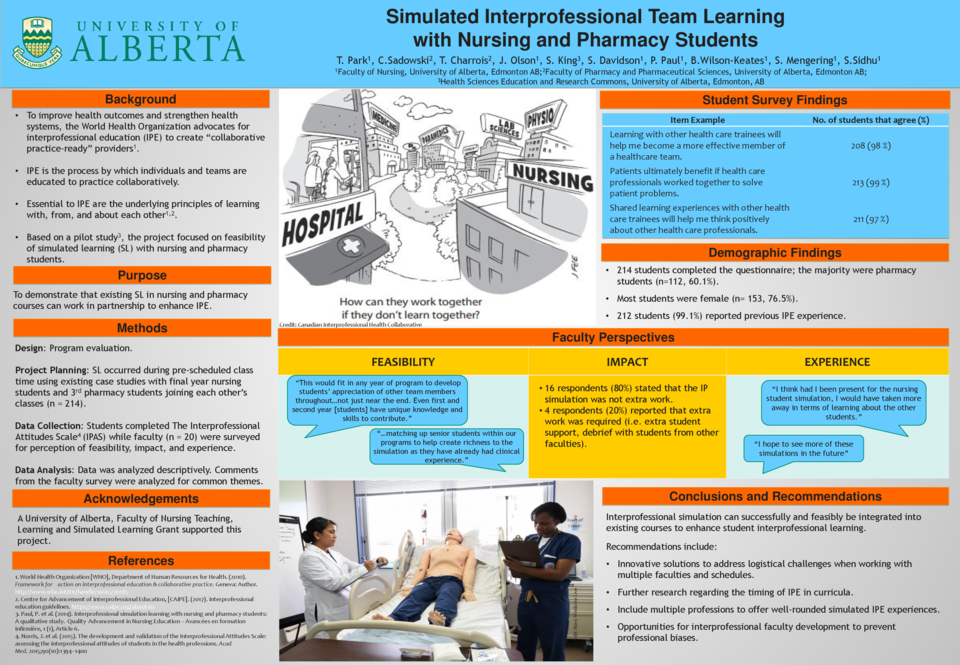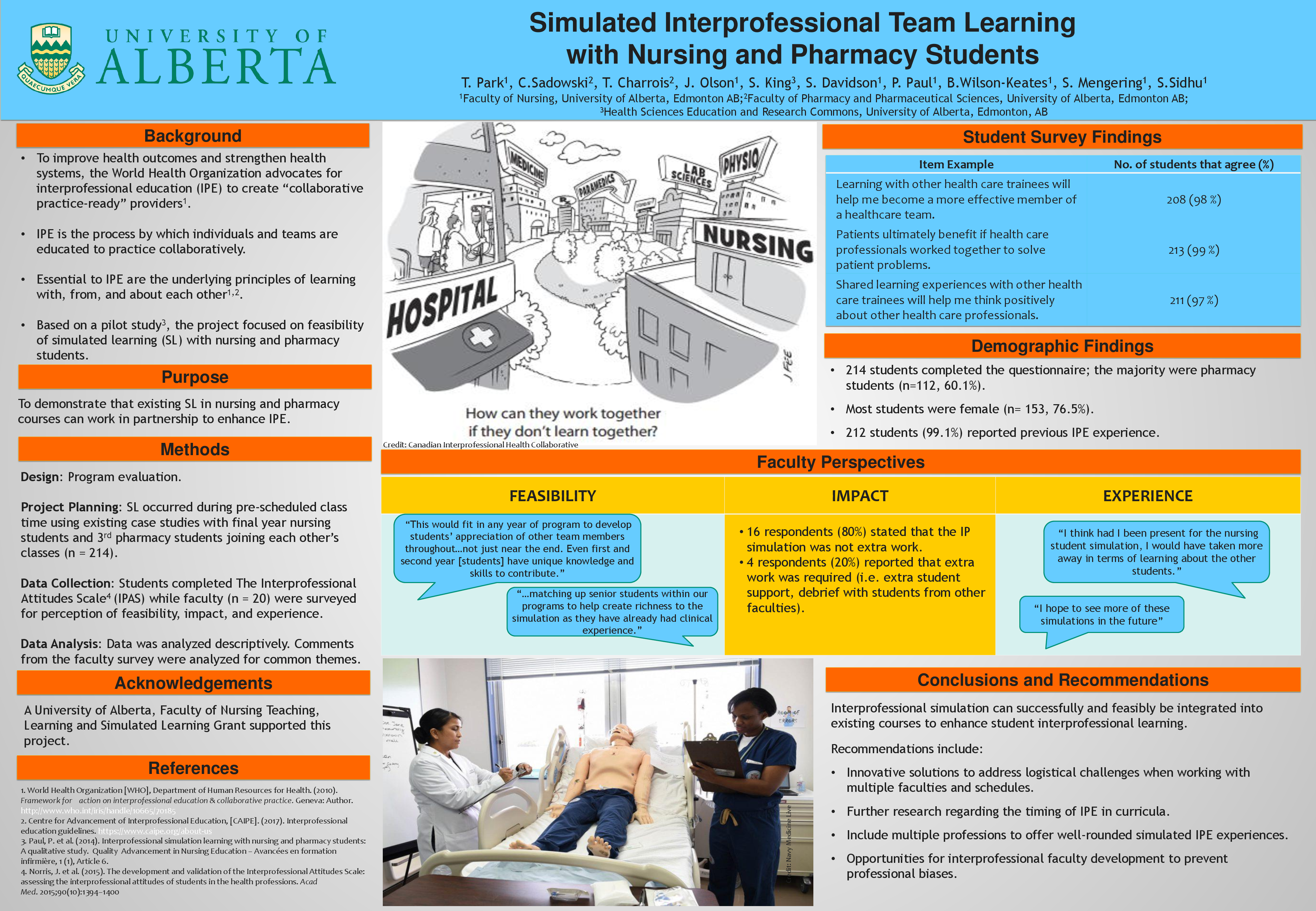Abstract
Simulated Interprofessional Team Learning with Nursing and Pharmacy Students.
Background: Although healthcare students are exposed to simulation learning (SL) to develop profession specific education, the use of uni-professional SL is no longer adequate as students enter clinical settings where teams work together for optimal patient care1,2, As the roles of registered nurses and pharmacists frequently overlap, future practitioners need opportunities to practice interprofessional collaboration2.
Research question/Hypothesis: Guided by a pilot project2 and after receiving ethical approval from the Research Ethics Board, the study examined the feasibility of integrating interprofessional SL into existing nursing and pharmacy courses and expected that SL would be well received by students, and would not require additional resources.
Method: Beginning with a high-fidelity simulation (HFS) nursing scenario, nursing students led the SL while pharmacy students participated. Pharmacy students then led a standardized patient community-focused scenario while nursing students participated. During debriefing, students discussed the professionals' roles and opportunities to collaborate for optimal patient care. Students also completed the Interprofessional Attitudes Scale (IPAS)3.
Results: A total of 184 students participated. Most students (n = 182; 98%) were satisfied with the SL experiences, and reported greater role clarification of the other profession. Almost all participants (n = 180; 97%) felt better prepared for collaborating with the other healthcare profession in a clinical setting. An unexpected course change was required to accommodate the scheduling for the nursing students, requiring additional resources.
Conclusion: This research demonstrated that nursing and pharmacy students were receptive to the SL experiences and felt better prepared to collaborate with other professions. However, creating this opportunity was challenging given the differing schedules of the programs. Coordination of schedules is recommended to help provide future educational opportunities for students to practice interprofessional collaboration.
References:
- Bolesta S & Chmil JV 2014. Interprofessional education among student health professionals using human patient simulation. Amer J Pharm Educ 78(5) 1-9.
- Paul P, et al 2014 Interprofessional simulation learning with nursing and pharmacy students. Qual Advance Nurs Educ 1(1) Article 6.
- Norris J, et al. 2015 The development and validation of the Interprofessional Attitudes Scale. Acad Med: J Assoc Amer Med Coll doi: 0.1097/ACM.0000000000000764






